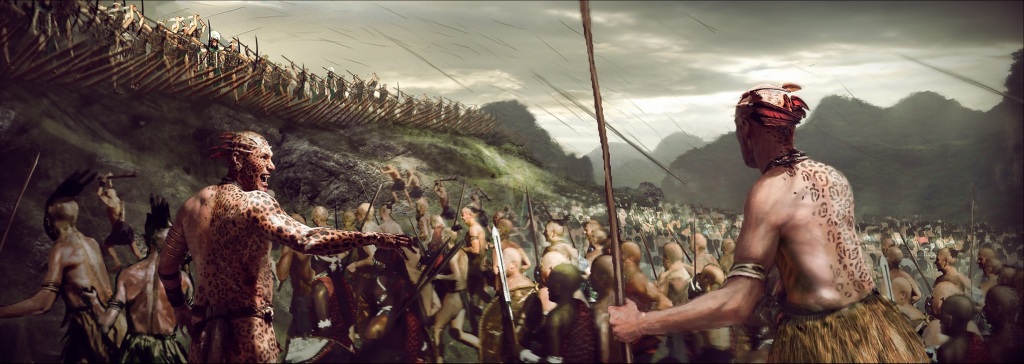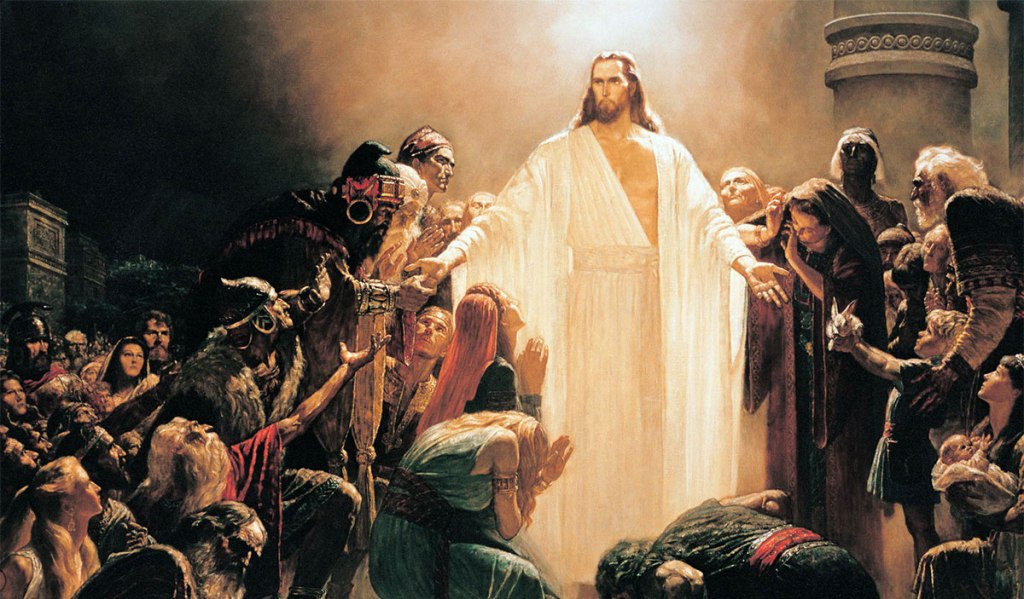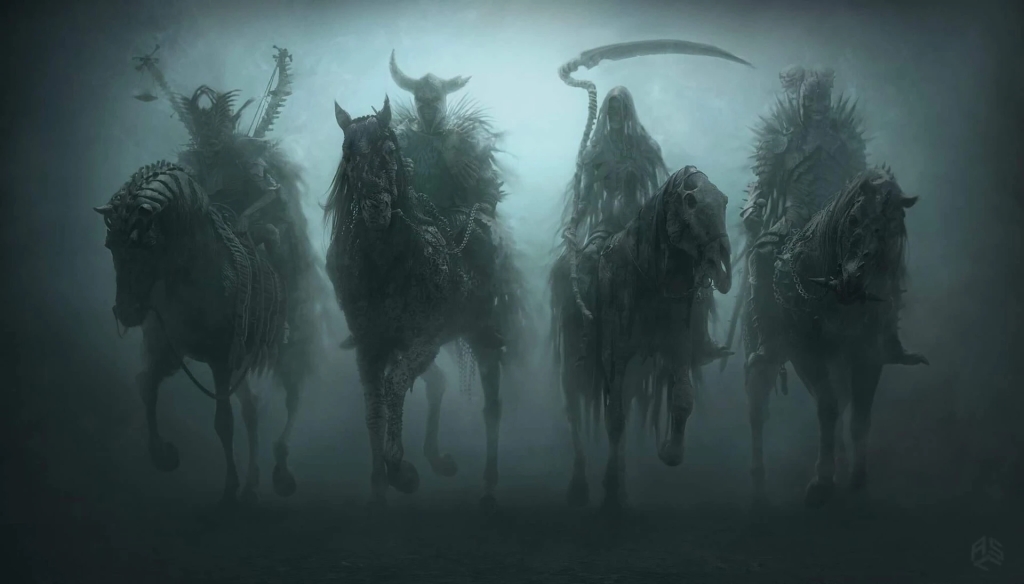1 multitudes of people, so the vision now becomes the basis for making sense of Nephite future history. As in the vision where the multitudes pressed forward toward the tree, so the multitudes of Nephites pressed forward through time toward the coming of the resurrected Christ to America, as prophesied by their prophets (just as Lehi beckoned the multitudes toward the tree).
2 multitudes gathered together TO BATTLE, one against the other, (see v15 also) recalls 11:34 where multitudes of the earth gathered together TO FIGHT against the apostles of the lamb, and how the multitude of the earth was gathered together…in a large and spacious building (11:35). The point? Those at the building who seem only to “mock” and “point the finger of scorn” (8:27, 33) at those partaking of the fruit are not using the index finger, if you get my drift. And giving the finger is the least of it—their anger and enmity are so vicious, so violent, that they FIGHT, BATTLE, make WAR and SLAUGHTER WITH THE SWORD!

3 wars and contentions, become the theme of this chapter, the best way to summarize Nephite history. With this in mind, it becomes clear why Lehi wanted so badly for the people to come to the tree and remain there.
4-5 mist of darkness…vapor of darkness, thus the vision mists are also symbols of the actual darkness that prevailed at the time of Christ’s appearance to the Nephites.
5-10 the Lamb of God descending out of heaven, these verses are a visual of what arriving at the tree and partaking of the fruit looked like on a cosmic Nephite scale. Nephi’s application of the vision in interpreting Nephite future history is fascinating (and, mind you, far above Joseph Smith’s pay grade).

10,11 garments made white, recalls the white fruit. The apostles “are made white in the blood of the lamb, because of their faith in him.” This then is the application of partaking of the fruit. We partake when we participate in the atonement, accessing the power of his shed blood, by faith in his name.
*The Angel will now reveal several specific interpretations of the vision; but note that he started by first showing Nephi, just as the angel did before when Nephi asked about the interpretation of the tree. So,
16 the fountain of filthy water…even the river…are the depths of hell, yes, but what the angel showed Nephi before interpreting was WAR.
17 the mists of darkness are the temptations of the devil, yes, but again, what the angel showed Nephi before interpreting was hatred and enmity between the brothers and their seed.
18 the large and spacious building…is vain imaginations and the pride of the children of men, yes, but what the angel showed Nephi before interpreting was the pride of his seed, and how each thought they were better than the other (see v19)
a great and terrible gulf divideth them, the gulf of justice is the river (15:28), which divides the tree from the building, or the wicked from the righteous. So, the image painted in v16-18 is as follows:
- We press toward the tree, or are at the tree, which is bright and beckoning;
- Mists appear and darken the way, making the tree less clear and less inviting;
- The large & spacious building beckons;
- The river/gulf, which must be traversed to get to the building, is hidden both by being low and because of the mists;
- We head toward the building, but in a “vain” attempt as it is in fact unreachable, because…
- We fall into the river/gulf, or get lost into broad roads where we perish nonetheless.
22-23 these shall dwindle in unbelief…become loathsome…full of idleness and all manner of abominations, see Moroni 9. This language is always reserved for the Lamanites, so the point is that the wicked Nephites will become Lamanites. This is the interpretation then of what it means to fall into the river or wander into broad roads, perish, and get lost (v17); and that is for those who survive. For many, to fall into the river of war is to be slaughtered, as the Book of Mormon will tragically recount.
Postlude
When John the Revelator opens the seven seals, representing the 7,000 years of the earth’s existence, he first sees four horseman, each representing a thousand years of the first four millennia from Adam to Jesus (per biblical chronology). Why horsemen to represent those eras? WAR. The first has a bow and goes forth to conquer, the second a sword to take peace from the earth, the third a balance to mete out justice, and the fourth is death and hell incarnate, killing mankind with weapon, famine, and beasts. (Rev 6:1-8). In like manner, Nephi’s angel, to sum up the thousand years of Nephite history (600BC—400AD), simply shows Nephi how his family gathered together to fight against each other, and slay each other, in great and terrible wars.
What is the opposite of the tree? As we’ve established, it’s not the building, it’s the river gulf. Ergo, what is the opposite of the Prince of the Peace? War. Suddenly the importance of the Savior and his invitation to come unto him becomes serious—this isn’t a matter of sinners or saints, it’s a matter of life or death.
